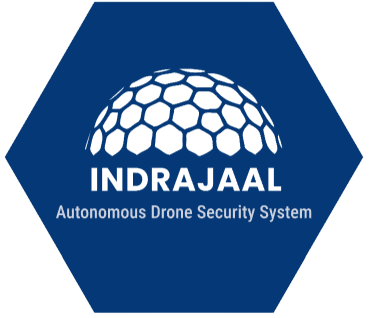When was the last time you read about a drone attack in the news? Chances are, it was sometime this week.
With drones evolving from recreational devices to tools for reconnaissance and terrorist attacks, the threat to critical infrastructure has never been higher. The growing accessibility of drones in the last few years has heightened concerns for law enforcement agencies worldwide. In response, many countries are investing in advanced drone technologies and counter-drone systems.
India has not been immune to this threat. The country has experienced rogue drone activity, with drones being used to smuggle weapons, drugs, and ammunition. The first drone attack in June 2021 in Jammu changed everything and became a stark reminder of this emerging danger.
All this raises an urgent question: how can India effectively defend against drone attacks from neighboring countries?
The need for security with counter-drone technology
Counter-drone systems equipped with autonomous technology can detect, track, and neutralize rogue drones in real-time, providing a proactive defence mechanism. These technologies are capable of handling a variety of threats, from single drones to coordinated swarm attacks, ensuring comprehensive protection. By securing airspace over sensitive areas, counter-drone technology prevents potential attacks on critical infrastructure, military bases, and civilian areas.
Furthermore, the deployment of counter-drone technology supports broader military operations. It enhances surveillance capabilities, ensuring continuous monitoring of borders and strategic locations. In conflict zones, these systems can protect troops from drone-borne threats, reducing risks to personnel and equipment. The ability to quickly respond to and neutralize drone threats also aids in maintaining the integrity of ongoing operations.
By integrating effective counter-drone systems, India can strengthen its defensive posture, safeguard its sovereignty, and ensure the safety of its citizens against evolving aerial threats.
Enter Indrajaal, a 360-degree autonomous aerial security system

Indrajaal™, the world’s only anti-drone system capable of defending against all classifications and levels of autonomous drones, integrates 12 proprietary modular technologies. These can be used individually or combined to create a comprehensive autonomous drone security solution.
The system is a major advancement in aerial security, defending against sophisticated drone attacks with precision. Its integrated approach ensures airspace safety by swiftly neutralizing threats.
Its state-of-the-art drone security system effortlessly oversees extensive sensitive regions, effectively mitigating the threat of intrusions. It provides real-time data and visuals, allowing security professionals to assess critical situations from a safe distance and minimizing potential dangers.
At the heart of Indrajaal™ is its customized Command and Control (C2) system, which offers users a dependable tactical overview. This system connects various sensors and effectors tailored for each use case, ensuring comprehensive 360-degree coverage. Indrajaal™ is equipped to handle threats from micro, mini, and large drones across diverse environments, from military bases to public events. Its versatility makes it highly effective in protecting critical infrastructure.
Indrajaal™ represents a significant advancement in anti-drone technology, combining robust surveillance capabilities with swift response mechanisms. It stands as a crucial defence against modern drone threats, ensuring the safety and security of sensitive areas worldwide.
Consider a major power plant in Western India under attack. Terrorists launch multiple drones carrying explosives simultaneously to target critical parts of the plant, including the control room and transformers. Their goal is to cause extensive damage and disrupt the power supply to a large area.
How can Indrajaal be used to protect such an asset?
Indrajaal™ employs a multi-layered approach, integrating radar systems, RF scanners, acoustic sensors, and visual cameras to detect drones across wide areas. These technologies identify and track drones, assessing their type and potential threat based on payload and flight patterns
The counter-drone system follows a 5-step fully autonomous process to protect the skies:
- Detect: Wide-area detection is achieved using a radar-based counter-drone system deployed around the power plant. As drones enter the protected airspace, the radar system identifies them. Additionally, Radio Frequency (RF) sensors pick up signals from the drones, helping to pinpoint their precise location within the area.
- Identify: Once the drones are detected, the system proceeds to identify the type of drone, whether commercial, custom-built, or otherwise. This identification process assesses the potential threat posed by each drone, taking into account their payload capabilities and flight patterns to determine the level of danger they represent.
- Track and target: After identification, the system tracks the movements of the detected drones. It continuously monitors their flight paths and positions, providing real-time data that is crucial for targeting. The system evaluates the best methods for targeting each drone based on its type and the assessed threat level.
- Deploy countermeasures: The next step involves deploying countermeasures to mitigate the threat. The counter-drone system uses RF jamming to disrupt the communication between the drones and their operators. This interference causes the drones to either land or return to their point of origin. In more advanced systems, directed energy weapons, such as lasers, are deployed to target and disable the drones’ critical components.
- Neutralize threat: The final stage is the neutralization of the drone threat. Disrupted drones are forced to land or return to their operators due to the loss of communication. When necessary, directed energy weapons are employed to disable the drones by targeting essential components like rotors or electronics, effectively neutralizing the threat and ensuring the safety of the protected area.
Navigating India’s future
The future is unmanned.
As India embraces the era of drones, there is a critical need to strengthen regulations and enhance control over their usage. The evolution of air defence procedures and the designation of more no-fly zones around important installations will significantly improve security measures. Looking ahead, the establishment of a dedicated anti-drone force may become necessary to effectively mitigate emerging threats.
Effective counter-drone systems, equipped with advanced sensors, artificial intelligence, and autonomous capabilities, are essential to detect, track, and neutralize rogue drones in real time.
By investing in these technologies, India can enhance its defence capabilities against evolving aerial threats, protect sensitive installations, and ensure the safety of its citizens.